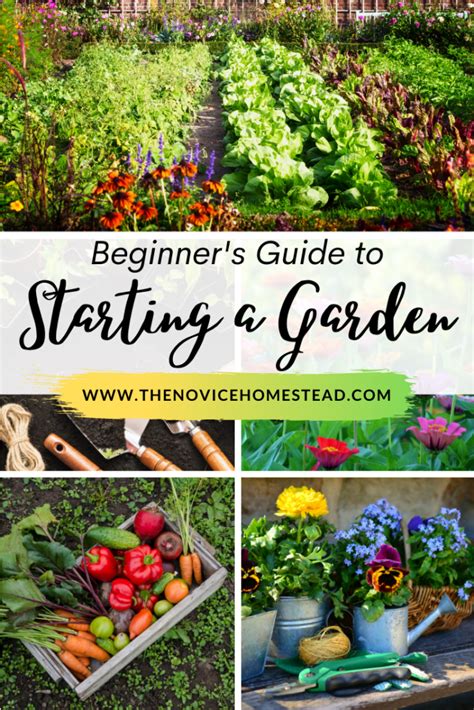How to Start a Garden: A Beginner's Guide to Growing Your Own Food
Starting your own garden can seem daunting, but it's a rewarding experience that connects you with nature and provides fresh, healthy food. This guide breaks down the process into manageable steps, perfect for beginners. Whether you dream of vibrant tomato plants or a bountiful herb garden, we'll help you get started.
1. Planning Your Garden: Location, Sunlight, and Soil
Before you even think about seeds, planning is key. This initial step lays the foundation for a successful garden.
Choosing the Right Location:
- Sunlight: Most vegetables need at least 6-8 hours of direct sunlight daily. Observe your yard throughout the day to identify the sunniest spots. Consider using a sun tracking app to help you pinpoint the best areas.
- Accessibility: Choose a location that's easily accessible for watering, weeding, and harvesting. You'll be spending time in your garden, so make it convenient.
- Water Source: Proximity to a water source (hose or watering can) will save you time and effort.
Assessing Your Soil:
- Soil Test: A soil test (available at most garden centers) will reveal your soil's pH level and nutrient content. This helps you amend the soil appropriately for optimal plant growth. Healthy soil is the backbone of a thriving garden.
- Soil Type: Different plants prefer different soil types. Sandy soil drains quickly, while clay soil retains water. Understanding your soil type will guide your plant selections.
- Soil Improvement: Amend your soil with compost or other organic matter to improve drainage, aeration, and nutrient content. This will significantly enhance your plants' health.
2. Choosing Your Plants: Seeds, Seedlings, or Starts?
Now for the fun part – selecting your plants! There are three main ways to get started:
Starting from Seed:
- Pros: Cost-effective and a wider variety of options.
- Cons: Requires more time and patience; seedlings need careful tending.
- Tips: Use seed-starting mix, not garden soil. Provide adequate light and warmth.
Buying Seedlings:
- Pros: Quicker results and less work than starting from seed.
- Cons: More expensive than starting from seeds.
- Tips: Choose healthy seedlings with vibrant green leaves and no signs of disease.
Using Transplants (Starts):
- Pros: Similar to seedlings, offers a head start on the growing season.
- Cons: Can be more expensive, depending on your selection and where purchased.
- Tips: Ensure that the plants have been hardened off before planting them outside.
3. Preparing Your Garden Beds:
Once you've chosen your plants, it's time to prepare the garden beds.
Clearing the Area:
- Remove weeds and debris: This prevents competition for nutrients and resources.
- Till or loosen the soil: This improves aeration and drainage, making it easier for roots to establish themselves.
Planting Your Plants:
- Spacing: Follow the spacing recommendations on the seed packet or plant tag to avoid overcrowding.
- Depth: Plant seeds or seedlings at the appropriate depth to ensure proper germination and growth.
- Watering: Water thoroughly after planting to help the roots settle.
4. Ongoing Garden Care: Watering, Weeding, and Fertilizing
Maintaining your garden requires consistent attention.
Watering:
- Consistency: Water deeply and less frequently, rather than shallowly and often.
- Timing: Water in the morning to minimize water loss through evaporation.
- Methods: Consider drip irrigation or soaker hoses for efficient watering.
Weeding:
- Regularly remove weeds: Weeds compete with your plants for nutrients and water.
- Mulch: Applying mulch helps suppress weed growth.
Fertilizing:
- Nutrient replenishment: Fertilize your plants regularly to provide essential nutrients for growth.
- Soil testing: Knowing your soil’s needs helps you choose the appropriate fertilizer.
5. Harvesting Your Bounty:
The most rewarding part! Harvesting depends on the plant type. Always check plant tags for harvest times and methods.
Remember: Starting a garden is a journey, not a race. Don't be discouraged if you encounter challenges. Learn from your experiences, and enjoy the process of nurturing your plants and harvesting your own fresh produce. Happy gardening!
